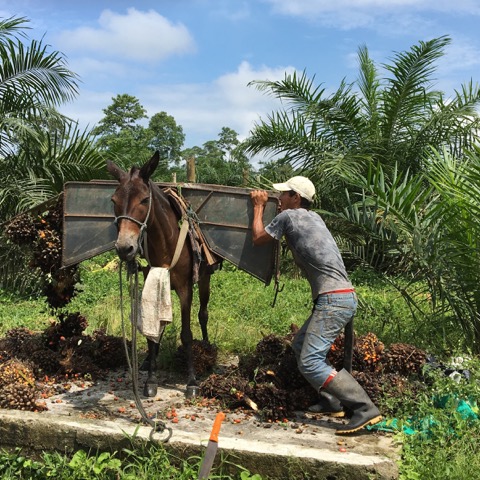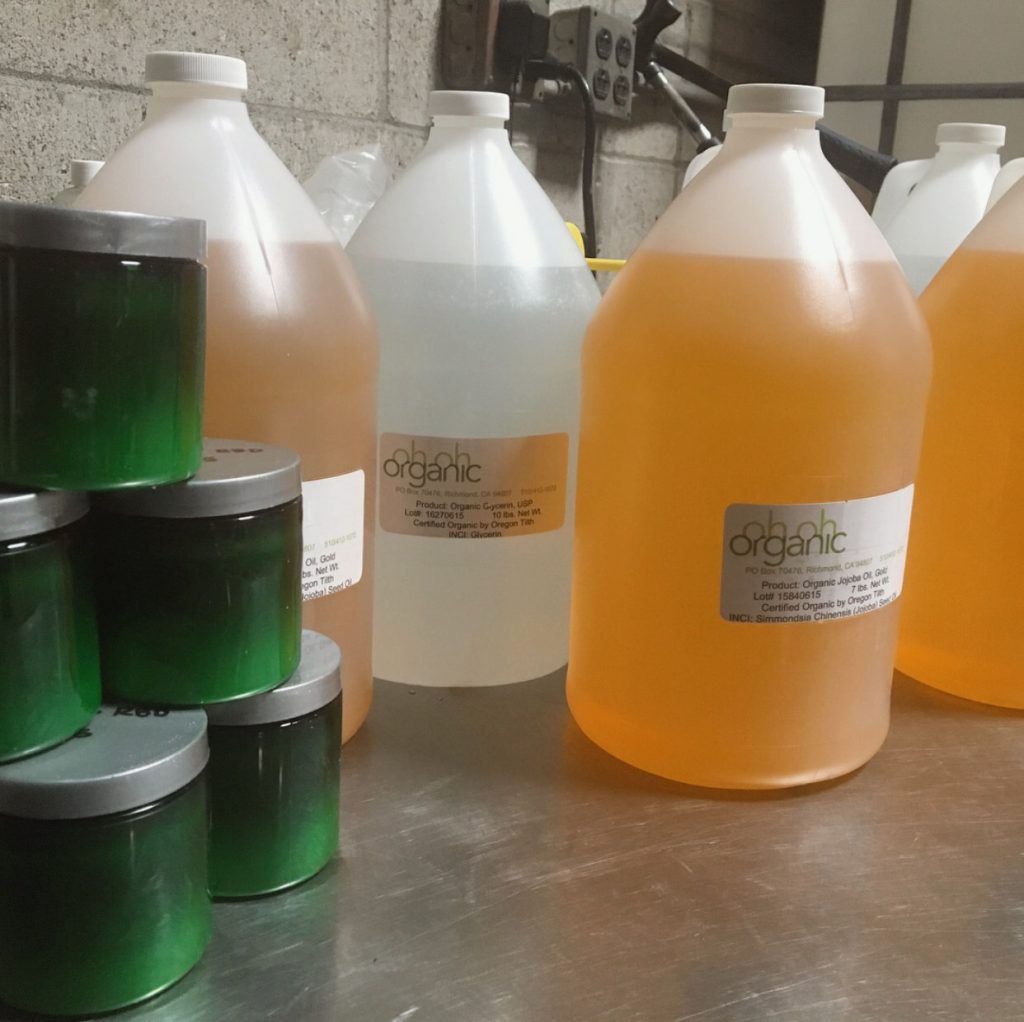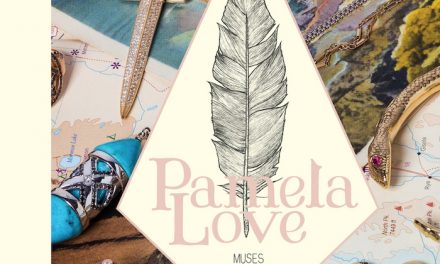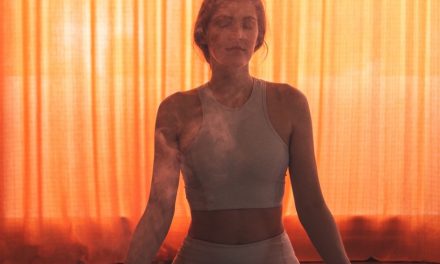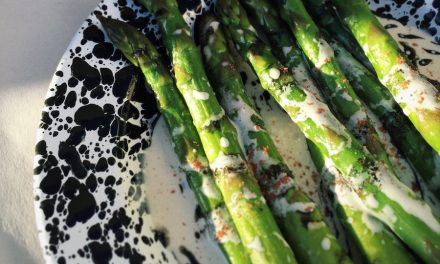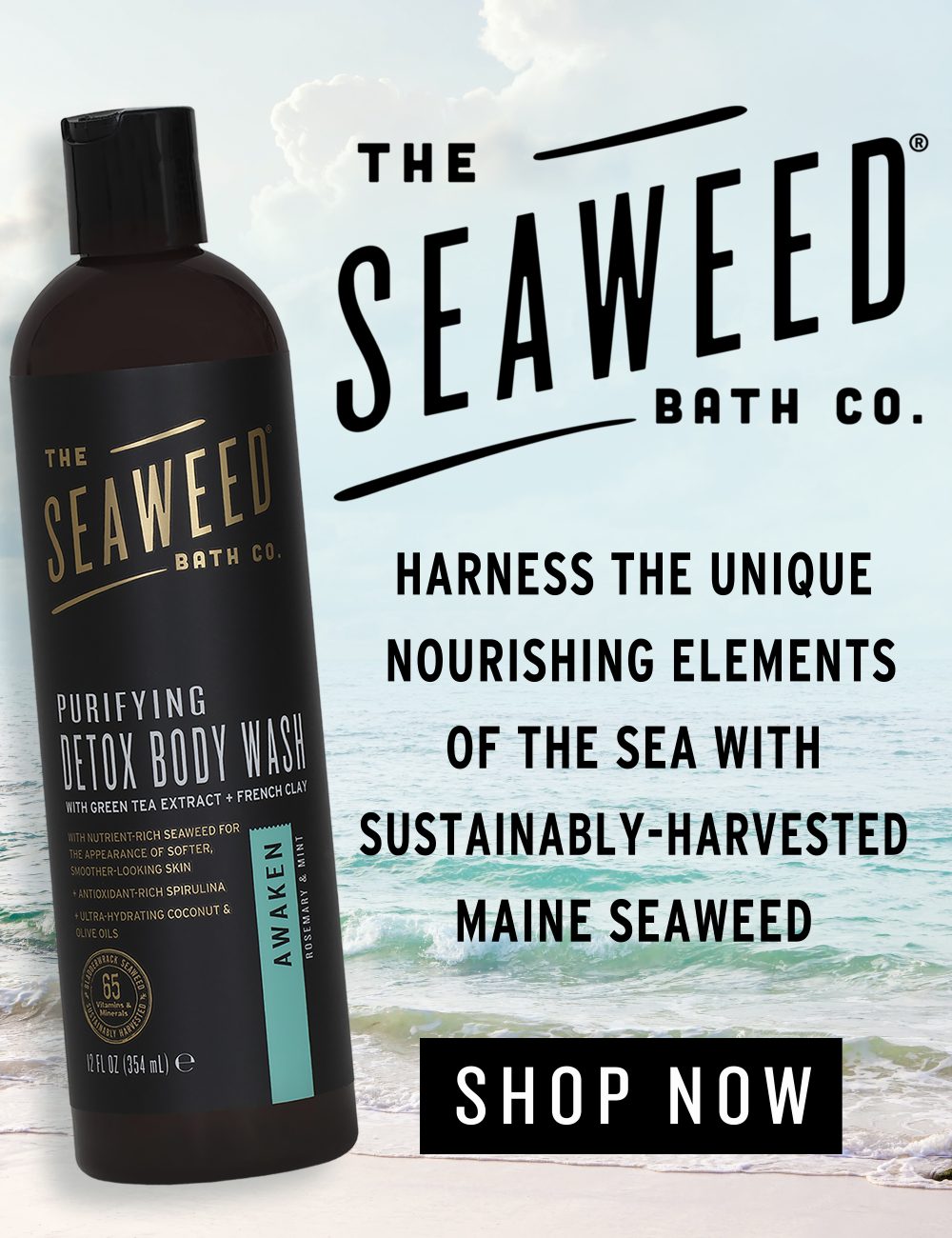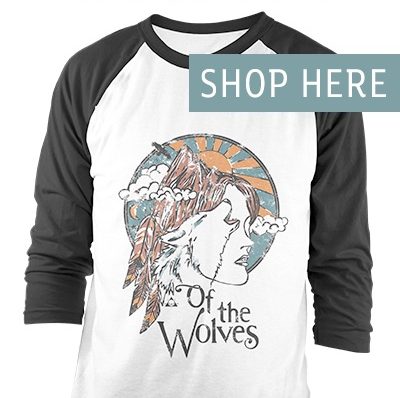Behind the Beauty Brands | Oh Oh Organic
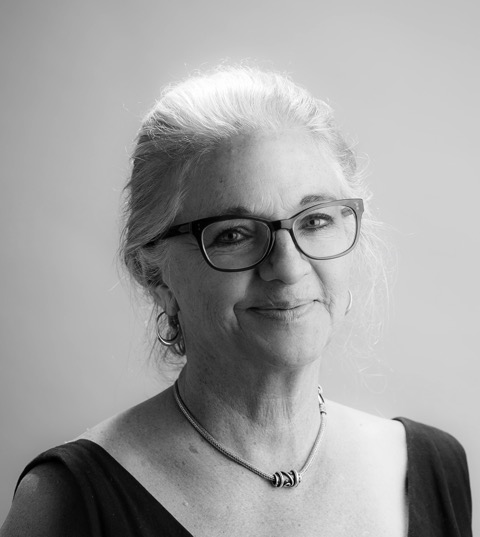
If you’re anything like me, you haven’t thought too much about the harvesting and growing standards of the oil that is used in your beauty products, and you certainly haven’t considered that the mica in your eye shadow may have potentially been mined with child labor in India. Even while being conscious of most of the ingredients I put on my skin and typically buying natural products, I have trusted that I’m buying a finished natural beauty product from a company that has done its own solid research and that it’s safe for human consumption. Well, that is not necessarily always the case. Through my conversation with Gay Timmons of Oh Oh Organic, my eyes and my mind were blown open to a whole side of the beauty industry that I hadn’t really considered in such a way before this interview.
What does Oh Oh Organics do?
I’m the brand behind the brands. I sell the ingredients.
I don’t think people really think about that aspect of beauty which is why I think it’s really interesting. What did you study that allowed you to have the knowledge for this work?
You don’t really. I have a master’s degree in physiology, so I’m a trained scientist, and before that I had a degree in anthropology, so I was an archaeologist. But my first job out of college was working on the Oakland waterfront. I supervised loading cargo vessels. The ship will come in and you would know exactly what’s in the container because they’re in your yard. What I realized almost immediately is that California feeds the world. We’d get 100 containers of cotton, 40 containers of dried goods, and 10 containers of onions that are going to Japan – lettuce cauliflower, anything, everything, you name it. We are really lucky here with food. If you don’t see the massive movement of food, you don’t really understand, so I became fascinated by that.
I married a farmer, and we were processors. He wanted to have kids, and I said, “Okay, three years no pesticides. I got to get it all cleaned up…” My kids are all out of college now, they’re incredibly healthy. So, long story short, we had a processing facility more than we had a farm. We got involved with the whole organic movement, and we started creating organic standards for food processors.
We ended up divorced, and I had to support myself and two little kids because that farm didn’t make a lot of money. So, it was on me. I bootstrapped and became an organic inspector, more for processors than for the farms themselves. Because of all my years working on the waterfront, and because my brain works fairly mechanically, I really loved this work. I was selling organic ingredients to Japan and Taiwan. All export.
I decided that I wanted to sell organic ingredients to cosmetics companies instead of food companies. I had a friend whose elderly father did that at the time, and one day she asked me to help drive him to a sales call. I was basically his apprentice and I learned a lot about the cosmetics industry from him. Nobody at the time wanted to talk about organic, but little by little it’s changed.
It sounds like a conversation that’s needed to be had for a long time, and it does feel like it’s changing…
Oh, it is it’s changing big time.
How long have you been working in green beauty?
18 years.
And was green beauty a thing at the time?
It wasn’t so much green beauty as it was a focus on organic in the beginning. So from about 2005, it started really growing and catching on, and then the recession hit. It was very difficult, but then green beauty started to come back. I would say that it really started with the new generation of women entrepreneurs. With mostly women, it’s a different expectation on the part of the consumer. I just love it…it’s thrilling just to see how it all works.
I love that it’s women leading this charge. Traditionally, the beauty industry seems to have been led by men who tell us what to wear, and they’ve historically pumped toxic chemicals into beauty products completely unbeknownst to the consumers.
And people will say, “Oh it’s safe,” and I’m sure under a certain definition of safe it’s safe. But in the broader definition, it’s just not. So, we are growing. I can tell that the whole industry is growing, because we are growing at a very good pace. I can walk into a store now and 30% of the brands will have something in them that I sold them, or they hired me as a consultant to help them on developing their brands.
What do most of your days look like?
I do a lot of consulting, because entrepreneurs are typically not lawyers. They just haven’t lived in that world where they have to think about the regulatory requirements, and I have so I do a lot of that. I had to learn a lot of green chemistry because after 18 years of working in the industry I had plenty of time to learn and familiarize myself with its practices. Plus, I have worked on green beauty standards like the Cosmos Standard.
But I will say to an old practiced chemist, “Do you use know the foundations of green chemistry?”, and they won’t even know what I’m talking about. The paper on green chemistry was written in the 1990s; it’s been very well publicized. And up until recently, it’s been on the EPA website. I think it’s since been taken down.
Of course they took it down. They’re taking things off their website daily and de-regulating everything. It’s a special time.
Special is a very kind way of putting it.
I feel like it’s so easy for companies to just use the catchphrase “natural” now, even when it’s not necessarily healthy for you, and I think they’re getting away with it.
Yes, and I think a lot of that falls on the entrepreneur knowing what questions to ask. Which is a lot of the work that I do. That’s why I’m trying to teach everyone how to do this basic thing. We still need these functional ingredients, like emulsifiers that hold oil and water together if we want to make a lotion or shampoo. People need to ask for what is called the compositional statement or analysis. It says everything that’s in the ingredient. All the big companies do it. You can bet your bottom dollar Estee Lauder knows exactly what’s in every ingredient, because they’re run by lawyers and they look at liability.
I’m trying to get everyone to learn how to do that. It’s really just a statement about the four or so ingredients that make up your product and these companies have it at the ready to give out. You just have to know the questions to ask.
Why is it so important what is going into our products and onto our skin?
I think everyone has a different reason. I can only give you mine. My new favorite kind of way of looking at this is ORGANIC LIPSTICK = CARBON SEQUESTRATION. There is no doubt that we have an environmental crisis, in terms of resources and climate change. And the biggest contributing factor in that is the sequestration of CO2 that is accumulating in the environment and changing the way our atmosphere let’s through sunlight. If we can reduce CO2, our atmosphere gets back to a healthy state. Most CO2 pollution comes from agriculture, so the more people that are farming using organic methods, where you replenish the soil, the better.
That’s my bottom line. I want to see as many people as possible begin to understand how that works, and I can directly affect that by selling certified organic ingredients to the beauty industry because I can validate and measure every claim that I make.
It’s so interesting, because when I think of green beauty, I think in terms of what you’re actually putting on your skin. But I like the through-line from which you operate: let’s consider all the sustainability practices a company is working from and how it’s affecting the environment.
The thing is, it’s all going to go down the drain. It’s going to resurface in our water, so that’s the other aspect of this pollution. It’s a very broad issue, it’s everywhere and we really have to think about it. You know when I walk through some place like New York, especially with all the high-rises, I just think about all those people, in all those buildings, taking their showers – using all of the shampoos, conditioners, body washes, whatever they put on their body the day before, their makeup, their perfumes, their pills…all just washing down the drain. It’s all going into our water tables, and some of it they can get out, but a lot of it they can’t.
That makes me itchy.
Yeah, it should. So, that’s how my brain works, I kind of think in cartoons unfortunately.
It seems like green beauty is really just a long form chemistry, because you’re thinking through all of the other steps beyond just the one product that you’re coming up with today.
Yes, but a lot of chemists think through that anyways because of OSHA. And how it’s affecting the people that are making it, because they really are the ones that are risking the most exposure. Also, what is the byproduct that is going downstream and into the river.
They do consider what’s going down river? Because lately it feels like they can just dump it, and it doesn’t matter. No one’s regulating it.
Well, lately, yes, because they changed the laws around that, but green chemistry does consider it. I think the issue is consumers are creating enough pressure, and that’s what I’m seeing that’s so interesting. I was invited by some very large brands that I will not name (but they’re some of the largest brands in the world.) to come and talk to them about this, because they can see where it’s going and they’re feeling the consumer pressure.
Well good. If our lawmakers aren’t going to be pushing for changes, then we have to hit the companies where it hurts. We have to start saying we’re not going to buy products that have these ingredients in it – like SLS and parabens in shampoos. Now, big brands advertise “paraben and SLS free.” So, why were those things ever in it?
Most of those things were early versions of chemicals. They were developed, and they were well understood and they’ve been used for a long time and are effective. This is how I describe it: My mother, rest her soul, was not the best cook. But she had six recipes she knew everyone in the family would eat, and she could always have the ingredients. She knew how to make them and could get dinner on the table in 30 minutes. She knew those recipes, they worked, and that was that. That’s how most chemists are, that’s how most cosmetic formulation chemists are. They have a little basket of recipes they know they can use, and that formula is tested.
Stability is a very complex issue for a formula, so once you know you’ve done that, which is about three to six months of testing shelf life, you stick with it. Do the oil and water hold together with the emulsifier? Does it hold together with the packaging? Does the color hold? Is the aroma still present, or does it disappear? Does it grow bacteria, etc? It’s a lot of time and money, and they don’t like messing with those things. So, the hardest thing is to find a really creative chemist. I think I know four in the United States after 18 years.
That’s not saying a lot. You’re pretty steeped in this industry, and if anyone would know a creative chemist it would probably be you. So, for someone that’s looking to change up their ways, who wants to begin integrating cleaner and safer products into their homes and onto their shelves, it can be super overwhelming. Where do you recommend people starting?
Fragrance fragrance fragrance. Don’t buy anything that says fragrance on the ingredients statement even if it says “natural fragrance.” If they don’t disclose their ingredients, that’s a problem. Don’t buy it.
Why fragrance ?
Sensitivity. Skin irritation. Hormone disruption. It’s the easiest thing to react to from a manufacturer. I adore the perfumers that I know. They are amazing, and they can make very complicated formulas that have 75 ingredients and they don’t want to list them because it’s overwhelming and proprietary. But there should be a way for them to say, “This is safe, we’ve assessed it.” We need a green chemistry fragrance standard. We have that with organic certified cosmetics, but most people don’t do it.
What does your daily beauty routine consist of?
You’ve got to remember, I sell ingredients. I kind of make my own stuff. Basically years ago, I started using coconut oil for everything. I use it as lotion, it goes on everything and now I’m learning how to formulate. I was kind of intimidated by it, but now I’m having a really good time with it and actually making some really good stuff.
I read that you are a big advocate for “Palm Done Right.” Can you talk about that?
Yes. I had never carried palm oil before because of the implications of it. Basically, in Southeast Asia, they just kick everybody out of their land – they kick out the indigenous people and the government gives the land to their rich croney friends. They clear-cut the forests, and it kills the entire wildlife, the environment and the homes and the livelihoods of the humans who lived there.
So, in both the Ecuador and Sierra Leone mountains this company called Natural Habitat started this project where they have about 250 family farms, and they may each be an acre or two. They go in and teach the family-run farms about intercropping, or planting something in between the rows of palm trees, to increase diversity of the land. They’re also creating areas that bring back the natural habitat to the area.
Palm is a very important oil because it produces almost twice as much as coconut oil. People don’t want to do palm, so they switch to coconut because they’re similar chemically and then coconut takes up twice as much land. So if we’re going to preserve habitat, we need to make palm producers, produce responsibly. That’s why they created “Palm Done Right” it’s a website that has interviews with the growers, it talks about the farming methods, the whole nine yards.
They created it as a means for marketing support to help explain why what they do is so different. They just bought 400 acres of land in Ecuador and they’re going to do some carbon sequestration work. They’re really doing some top-notch science to look at the impact of this kind of farming in this area.
Do you get to visit the farms a lot?
I’ve been to Ecuador it’s absolutely beautiful country–amazing food, beautiful people. It was great. I haven’t been to Philippine farms that I work with for the coconut, and and I’m honestly not sure with the current administration that I want to go there. I have been to most of the oil processing plants that I work with. I sell a vitamin E, which is an antioxidant that keeps oil from going rancid. Their factory is in Spain, so I’ve been to their plant a couple times.
Is there anything else you’d like to add?
This is a really fun industry! I made a commitment in 1991 that I was going to do everything I could to make my living only organic, because you’re either part of the problem or you’re part of the solution.
You are definitely part of the solution.
That’s the decision that I made. I’m just really happy when I look at where I am now all these 29 years later. I can see that I’ve done what I wanted to do, and I’m seeing the results. Even if someone just puts one or two organic ingredients in their products, it doesn’t have to be entirely certified organic. I was just at a big show in New York and people are making strides, they’re at least talking about making all of these changes…
That’s half the battle.
Yes I think you have to get minds to open. All these women start demanding safer products and these companies will start to realize it’s important.

